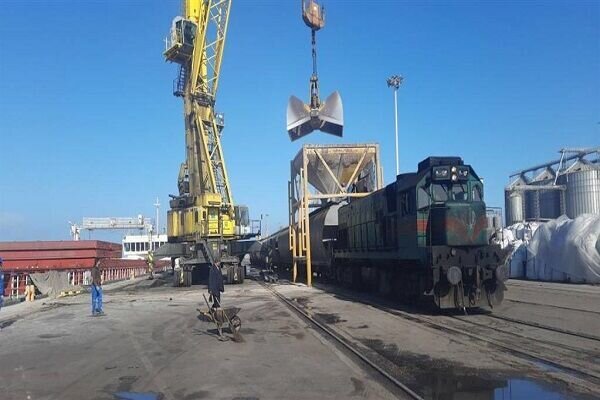Iran aims for 8m tons of rail transit in current year, eyes 40m in long term

TEHRAN – Iran moved five million tons of goods via rail transit in the last Iranian year (ended late March 2025) and plans to increase that to eight million tons this year, the head of the Islamic Republic of Iran Railways (RAI) said on Sunday.
Speaking at an investment ceremony focused on expanding Iran’s freight and passenger rail transport through public-private partnerships, Jabarali Zakeri emphasized the economic value of boosting rail transit.
“Developing transit brings in foreign currency revenue,” he said, noting that completion of east-west and north-south transport corridors could raise Iran’s rail transit capacity to 40 million tons annually in the long run.
Zakeri acknowledged the challenges in achieving this goal, citing the need for major infrastructure upgrades and resolving issues at border entry and exit points. Still, he noted that even with the current railway network, reaching an annual transit volume of 15 million tons is possible.
To achieve this, Iran must pursue stronger “rail diplomacy” and prioritize regional rail linkages with neighboring countries, Zakeri said. He also stressed the need for deeper engagement with key industry stakeholders, including locomotive owners, freight companies, manufacturers, and associations, involving them more directly in rail decision-making processes.
He highlighted a third strategy: expanding the use of “block trains”—dedicated, scheduled freight trains. “We now run 500 scheduled freight trains weekly,” Zakeri said, adding that this reduces state involvement and boosts private sector participation in train operations.
Referencing Iran’s Seventh National Development Plan, Zakeri said the government aims to add 550 locomotives, 300 passenger coaches, and over 3,000 freight wagons. He added that these goals would be pursued with the support of private sector investment and international financing.
Zakeri also announced that two major locomotive contracts would likely be unveiled within the next two months, which he described as a boost for Iran’s rail industry. These developments are expected to fulfill 30 percent of the program's second-year targets.
He noted that Article 12 of Iran’s fuel savings law would help finance rail fleet development, and shifting freight from roads to rail could significantly reduce traffic fatalities—a major issue in the country.
Between March 13 and April 5, more than 1.95 million passengers traveled by rail, with zero fatalities recorded, Zakeri said. “Rail transport is safe, and its expansion can help us fulfill our responsibility to reduce road casualties.”
He concluded by emphasizing the need for closer collaboration with the Ministry of Economic Affairs and Finance to advance the Railway’s defined investment packages in line with this year’s national theme, “Investment for Production.”
EF/MA
Leave a Comment